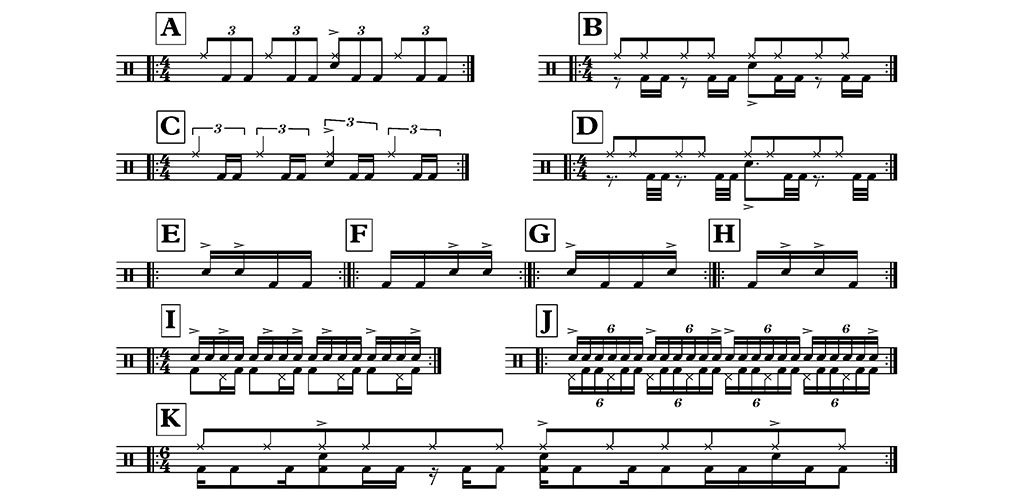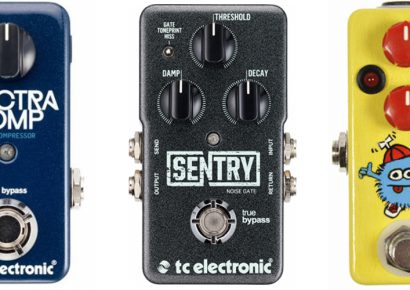The Correct Technique
There are countless videos out there on YouTube and on instructional DVDs that will attempt to show you methods and strategies to be able to accomplish your goal. Heel up, heel down, slide, swivel, tight spring tension, loose spring tension, heavy beaters, light beaters, long board etc! The reality is this – there is no one technique and every player is very different.
Not one teacher actually showed me how to play my bass drum faster. I just had to hear the sound in my head and eventually, my body did what it needed to do to recreate that sound. I played a lot of softer gigs at one stage so I learned to play a fast double stroke with my heel down. On louder gigs, I developed a heel up technique so it was louder when necessary. It was a process but I did have a bunch of little exercises I practiced along the way that did certainly help, so I thought I’d share them with you.
Improvise Away
The idea here is that you use each of the exercises as a guide and improvise as you see fit, once you’re comfortable. Each one will have its own way of extending to be moved around the drums and experimented with. Yes, you can experiment with the bass drum part itself, but I’ve found by concentrating on the hands, you tend to put the bass drum part into ‘autopilot’ or your subconscious. It becomes habit and is played for a very long time whilst you’ve been having fun impro- vising. These exercises all promote playing the bass drum on different parts of the beat, bar and subdivision – triplets/16th notes etc. Depending on where you play a double stroke in the bar will require a slightly different technique. The same double stroke can also feel very different when played on the beat verses off the beat.
The Exercises
Figures A – D are based on the idea of playing a straight rock beat in the hands, with the snare drum as a half time backbeat on beat 3. Fig A uses a double stroke on the bass drum as triplets, which would feel very different to Fig B as 16th notes. To take it a step further I’ve used the last part of 16th note triplets in Fig C and 32nd notes in Fig D. Start those last two slowly.
Next up is a very standard sticking that works amazingly as a fill. I’ve placed the bass drum double on each part of the beat through Figures E – H. A natural extension for these exercises is to move the hands around the drums. Splitting the two strokes across different drums gives more of an unpredictable sound than just two strokes per drum. Mix it up as you see fit, but make sure it’s all even as you get faster.
Figure I is a variation on the much loved Samba. You can vary the hands as much as you want – different accents, just single strokes or another combination. It is important to maintain a steady ostinato with the feet but the hands can go to town. Fig J is a little rip off something I saw Dennis Chambers do where he played the triplet foot pattern continuously and took a solo over it. Start with single strokes or say a double paradiddle in the hands to line up over the feet and go from there. There’s heaps of stuff you can do with this one!
Figure K utilises the same double stroke on the bass drum but played as a grouping of three 16th notes to create a polyrhythm against a straight rock feel with snare on beats 2 and 4. As you can see, by the time the polyrhythm comes back around to start at the beginning of the groove/pattern, you end up with a 6/4 bar.
All this too easy? Just speed them up – as fast as you can do comfortably and musically. Once you’ve done this, it’s always best to practice the ideas in context of where you might actually use it in a musical setting. It may be just in part or the whole exercise but if you don’t practice something as you might use it – well, you probably won’t use it. Enjoy these and hopefully they help!

